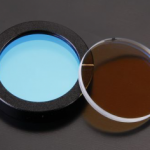
Everything You Wanted to Know about Micro Prisms
Tuesday, 13 December, 2016
Tips on How to buy the best wave plate for your purpose
Friday, 23 December, 2016A waveplate is an optical component which is concerned with altering the polarization state of a light wave passing through it. It is also referred to as a retarder and is commonly of two types, half-wave and quarter-wave. While the former rotates the direction of polarization of linearly polarized light, the latter does the job of converting linearly polarized light into spherically polarized and vice versa.
A crystal waveplate consists of a birefringent crystal with a precise thickness and orientation. The crystal is cut in the shape of a plate while with the crystal’s optic axis parallel to the plate’s surface. This gives rise to two axes in the cut’s plane, namely the ordinary axis (with refractive index no) and extraordinary axis (with refractive index ne).
The crystalline waveplate is a resourceful tool for the controll, assessment and optimization of polarized light. It is capable of performing a wide range of functions that range from separating or fine-tuning wavelengths to rotating polarization and adjusting ellipticity.
Some of its common applications are as follows:
- In lasers, Q-switching facilitates achievement of extremely high pulse powers and amalgamation and separation of wavelengths along with quenching destructive feedback.
- With the help of circular polarization, cleaner and more standardized cuts can be achieved in industrial laser cutting systems.
- Polarization control helps minimize variability and power loss in industrial and surgical multi-axis beam delivery systems.
- Scores of wavelengths can be routed and multiplexed in a single fiber by devices adopting waveplates.
- The extent of polarization rotation assists in determining sugar content in brewing.
- Strong output pulses can be separated from weak returns in rangefinders.
Birefringence is neither completely achromatic nor precisely proportional to wavelength. As a result, a λ/4 waveplate at 600 nm cannot be equated with either a λ/2 or λ/4 waveplate at 300 nm.. This creates limitation as well as opportunity. For instance, if you want to simultaneously route two wavelengths, you have to use a waveplate which operates differently at the two wavelengths. Again, not only waveplate thickness and expansion are affected by temperature but its birefringence too. Retardation is also affected by angle of incidence. Since every birefringent material has different characteristics, it is important to discuss your needs thoroughly with a firm skilled in manufacturing waveplates.
One precision optics firm is Tower Optical which offers waveplates in different shapes, sizes, coatings and wavelengths in order to suit any application whatsoever. Since they offer this plane-parallel optical
device in custom configurations along with stock ones, you can easily get them as per your needs and preferences. Their prices are really competitive and they are quite prompt in shipping products so that you can expect your ordered items to be delivered overnight. So what are you waiting for? Browse through their products in their new ecommerce site or make a custom order now!



